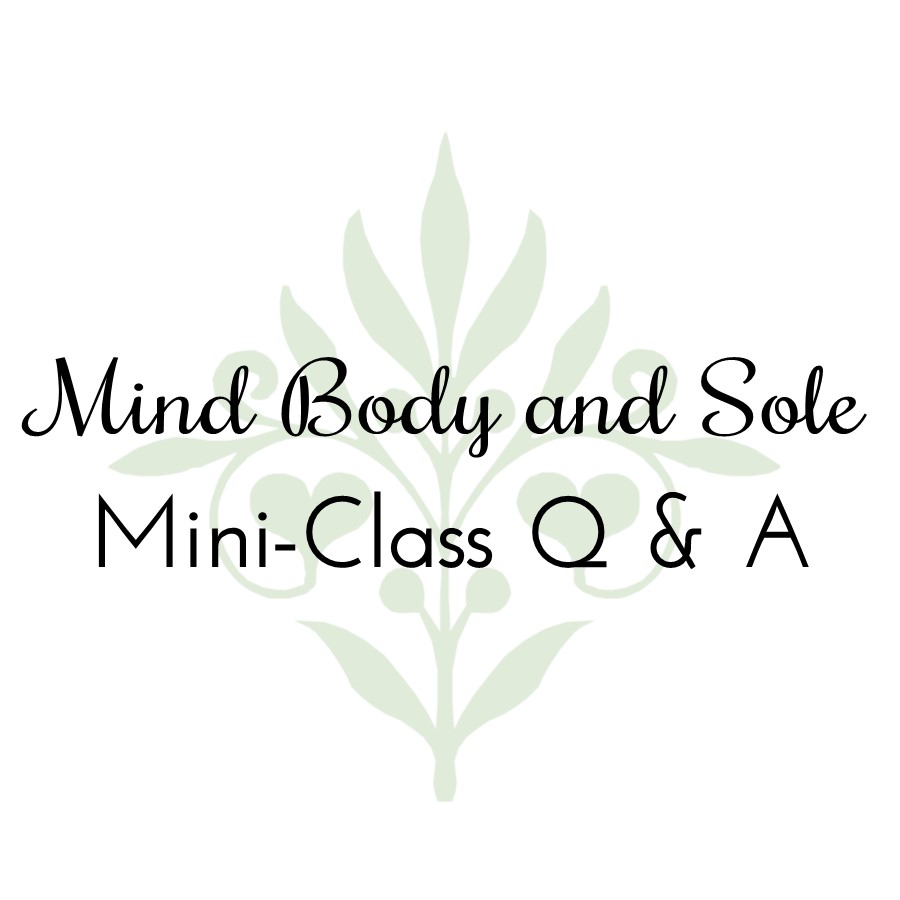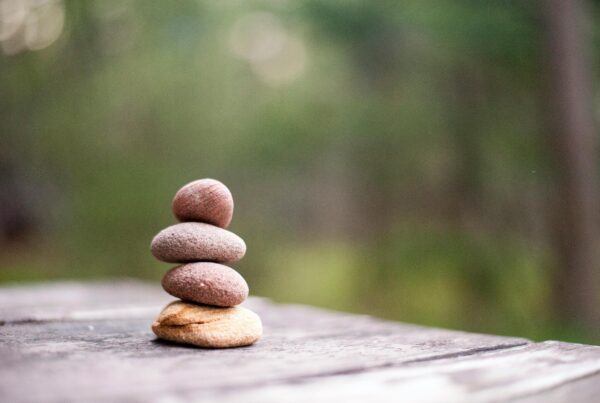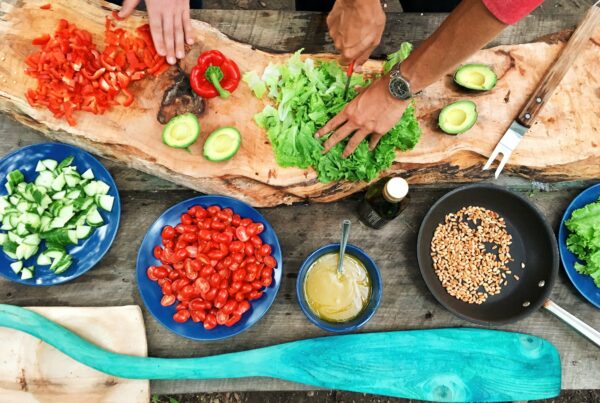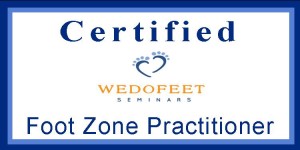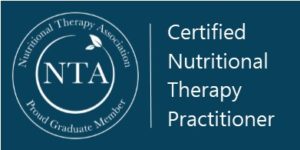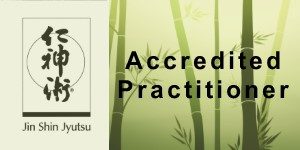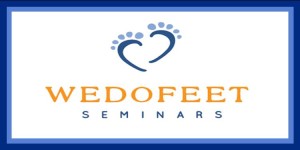Thank you to everyone who joined me yesterday for the Clay & Diatomaceous Earth Mini-Class. It was a lot of fun and I’m sure you were left with a lot of questions. I’m going to do my best to answer them today.
Q: What’s the difference between clay and diatomaceous earth?
A: There are several differences, and similarities, between clay and diatomaceous earth. Here’s a chart that highlights what some of those are.
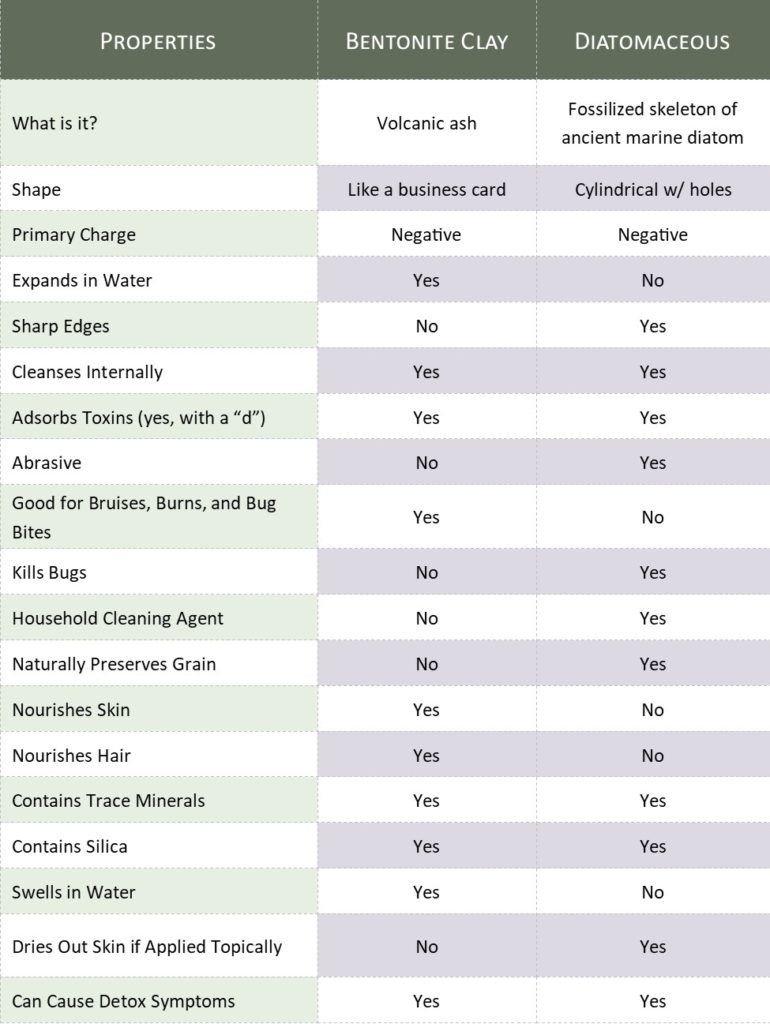
Q: Is this the same diatomaceous earth that I use to clean my pool?
A: Yes and no. Many people do use marine-grade diatomaceous earth to clean their pool, but it should never be used internally or on your pets. What you’re looking for is the food-grade diatomaceous earth.
Q: Do you have a favorite brand that you use?
A: The bentonite clay that I use is Redmond. Redmond is mined right here in Utah, and I try to use things that are grown (or in this case, mined) locally. I don’t have a favorite brand of diatomaceous earth. I just look for one that’s food-grade. The last time I purchased diatomaceous earth, I purchase the Earth.com brand of food-grade diatomaceous earth.
Q: You mentioned a calcium bentonite clay. Are there different types of bentonite clay?
A: That’s a really interesting question and the answer get’s a little muddy sometimes. Clay is categorized and labeled based on the amount of calcium, sodium, or magnesium that it contains. Most clay deposits are higher in either sodium or calcium but will typically contain both along with magnesium and other minerals. A clay that has more calcium would be called a calcium bentonite clay, even if it only had 2-3% more calcium than sodium.
Because clay is a natural product that’s found in various layers, as it’s mined, the composition can change. For example, a recent analysis of Redmond Clay showed that Magnesium is 1.64% of the total, Sodium is 1.72% of the total, and Calcium is 1.75% of the total. So Redmond would be called a calcium, sodium, magnesium bentonite clay. But the next analysis may show that it could be called a magnesium, sodium, calcium bentonite clay because the analysis of that batch was different.
When I talked with Darryl Bosshardt at Redmond about this, his opinion was that the composition wasn’t as important as the pH, the swell factor, and the Cation Exchange Capacity.
pH is a numerical value that represents the acidity or alkalinity of a substance. The scale for pH runs from 0 to 14, with 0 representing pure acid, 7 representing neutral, and 14 representing pure alkalinity. Here are some examples of pH levels.
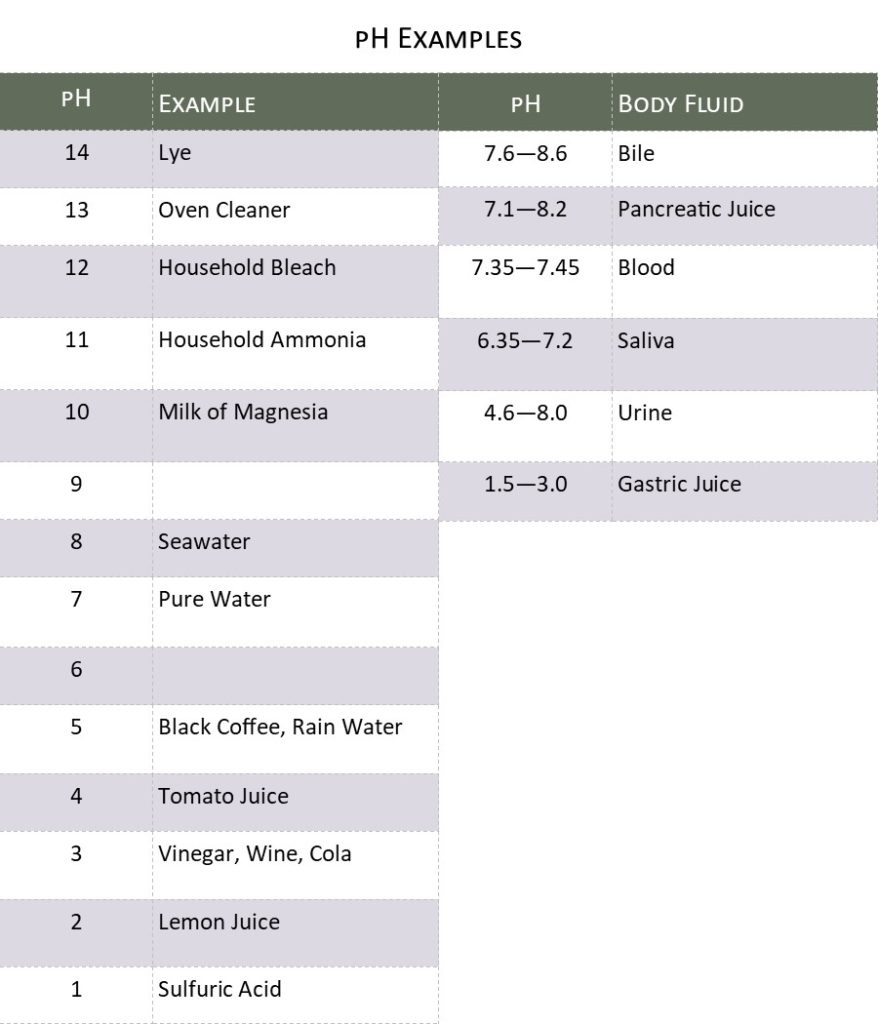
You’ll notice that the pH of the blood has a very narrow margin. That’s because the body does a really good job of maintaining it’s pH. It does this through bone remodeling. If you want to know more about that, you can read my article on Osteoblasts, Osteoclasts, and Apple Pie.
Probably the most important thing to take away from this is that what we eat can raise or lower the pH of our blood which causes the body to begin the process of bringing the body pH back into the acceptable range. Most of the food of the Standard American Diet (SAD) is highly acidic to our body. Drinking clay water supports the body’s efforts to bring the blood back into that 7.35 – 7.45 range.
(Note: You’ll also notice that lemon juice is very acidic, but in the body it becomes alkaline.)
According to Darryl, the pH of Redmond Clay is usually between about 8.7 and 9.8 which is on the alkaline side of the scale.
The swell factor is how much the clay will swell when it’s hydrated. The more the clay swells, the greater the surface area it has and the more positive charged ions it can remove from the body. Remember that toxins, radiation, heavy metals, and even parasites and viruses carry a positive charge. Redmond has a swell factor of about 10. Other brands that have been tested by Redmond have had a factor of about 4-5. Generally, the higher the sodium level, the greater the swell level, but also the greater the risk of constipation if you consume it and don’t stay adequately hydrated.
Cation Exchange Capacity (or CEC) is a test that shows how negatively charged the clay is, and therefore how many positive charged ions it can hold on to. According to Darryl, Redmond Clay generally has a CEC of around 65-70 and has been as high as 80. Other brands that he’s tested have been closer to 50 and the French Green Clay has been more like 20-30.
What we need to remember is that with natural products, and especially with mixed layers of clay, there can be variations with any test. The important thing, for me, is to find a product that I trust and that works for me.
If you tried clay and it didn’t work for you, don’t give up on clay, just try a different brand.
Q: Where do you purchase your clay and diatomaceous earth?
A: A couple times a year, I’ll have a group buy for Redmond products – clay, salt, Earthpaste, etc. If you live in the Centerville, Utah area you can sign up to get notifications of any group buy. Follow this link and add your information to the list. If you don’t live in the Centerville area you can typically purchase Redmond clay at health food stores or online through Amazon. I purchase my diatomaceous earth through Amazon (I shared the link above).
(Note: One thing that reflects a sad note about the state of our country, is that Redmond recently changed their clay labels. They used to say “dietary supplement” or “first aid” but now they’ve changed them all to say “facial mask”. Because our government keeps increasing supplement and drug regulations they changed the labels and removed any first aid and/or supplement uses to avoid someone thinking they were selling a drug. It’s the same clay that it’s always been and mined in the same way so internal use is still safe. They are just trying to be more careful in the labeling to avoid potential regulation issues.)
Q: Can you recommend any additional resources to learn more?
A: Absolutely!
Thanks again for joining me for this Clay & Diatomaceous Earth Mini-Class. I hope you enjoyed it as much as I did!

